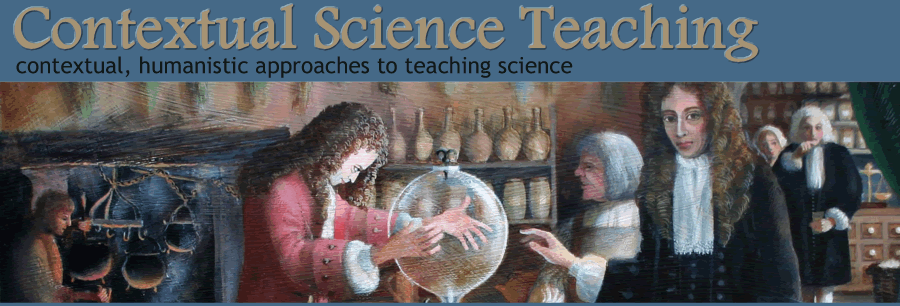 |
Interest in Learning Science Through Stories. In this paper, we review the research on interest and apply it to the understanding, construction, and effective use of science stories. The raising of interest in science addresses the vital concern of declining engagement with school science. Prototype stories and methods to incorporate them are included. |
 |
A "Romantic Understanding" of Science. The purpose of this paper is to apply the notion of romantic understanding by outlining its features and its potential role in science education, identify its features inthe Nikola Tesla story, and describe an empirical study to determine the effect of telling such a story to Grade 9 students. |
 |
A Framework for Contextual Science Teaching. Using several cognitive and learning theories together with various philosophical considerations, I identify five distinct contexts that are important in engaging learners: the theoretical, practical, social, historical, and affective. Based on these five contexts, I construct a model for teaching and learning, named the Story-Driven Contextual Approach (SDCA), in which the story assumes a major role in engaging the learner affectively. |
 |
The Application of Historical Narrative. This paper outlines how the historically-based story may be utilized effectively in the classroom and, as an illustration of this, presents the story of Lord Kelvin’s role in the laying of the first trans-Atlantic communications cable during the period from 1857 to 1866. Expected and observed classroom benefits that accrue from this approach are summarized. The paper concludes with an outline of a program of research which incorporates the development of historically-based stories. |
 |
The Photoelectric Effect. Five essential episodes of the history of the photoelectric effect are: (a) its discovery, (b) its initial explanation, (c) Einstein’s revolutionary explanation for it, and his receiving the Nobel Prize despite not having his hypothesis accepted, (d) Millikan’s experimental verification of Einstein’s equation despite not accepting his hypothesis, and (e) Compton’s measurements and theoretical explanation which produced the ultimate acceptance of Einstein’s hypothesis. |
 |
The Millikan Oil-Drop Experiment. A summary of historical details surrounding the original Millikan Oil Drop experiment suitable for use in revising the instructional approach is presented. Both Millikan and his graduate student, Fletcher, are featured with the view to emphasizing details that humanize the protagonists and that are likely to raise student interest. Difficulties current students have in performing the prednisone experiment are discussed from the perspective of Hodson’s (1993) framework and the students’ own observations. |
